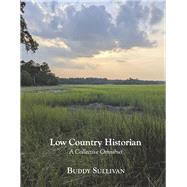Low Country Historian A Collective Omnibus
, by Sullivan, Buddy- ISBN: 9798350901184 | 8350901187
- Cover: Hardcover
- Copyright: 10/18/2023
THE THEMATIC intent of this book is to relate aspects of the history of the Georgia low country from an ecological perspective, specifically how environmental circumstances have shaped the lives of the inhabitants, and how they made their living. Herein are stories of "life and labor" as viewed through the prism of ecology, with discussions on the dynamics of salt marsh ecology, and the science employed in understanding it; how archaeology has told us about the way people lived in the past; the use of the land by generations of its owners; and waterways in the development of a maritime culture. The focus is largely economic because most of history is shaped by economic forces. In this respect the book investigates one locale in microcosm, that being McIntosh County, Georgia, a small coastal community with a maritime tradition. The author considers this study to be his "definitive" history of McIntosh County, over and above his other books about the county, as the volume contains new revelations gleaned from recent research, with corrections and revised interpretations. Most of the work in this "omnibus" is a consolidation, with appropriate revisions, of selected content from the author's other books about the coastal low country. While McIntosh County and Sapelo Island are the prevailing themes, much of the work examines aspects of the history of the coastal counties of Chatham, Bryan, Liberty, Long and Glynn as well. Chapter topics are structured around specific ecological parameters. These include the ecology of the coast and its scientific applications; historical archaeology; tideflow rice production in the Altamaha delta; rice planters in Bryan County; canal building in coastal Georgia; agriculture on a barrier island (Sapelo); land use at Harris Neck and its environs; lumber production and its associated maritime activity; African American settlement on Sapelo Island; an overview of Ossabaw Island; naval stores and turpentine production; the commercial seafood industry; acquisition of islands by northerners leading to the modern conservation movement; the author's low country legacy; and a concluding map supplement.






